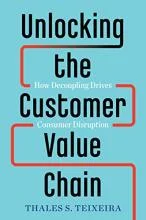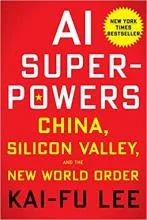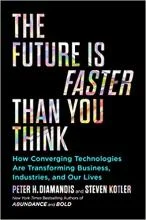Digital transformation is rarely just about IT. It’s about how you use the underlying infrastructure and technical choices to create more value for your customers and as a result, enable growth for your company.
For CIOs who want to further their digital transformation journey, here are my top recommendations for books that can help you better understand four pivotal topics: the customer journey, how to innovate on an enterprise level, the differences in global markets, and emerging technology trends that can change your job in the future.
[ Culture change is the hardest part of digital transformation. Get the digital transformation eBook: Teaching an elephant to dance. ]
On the customer journey:
Unlocking the Customer Value Chain: How Decoupling Drives Consumer Disruption

By Thales S. Teixeira
Maybe you think the backend IT infrastructure is the least customer-facing department in your company. But digital transformation is really about creating value for your customers to drive revenue for your organization.
Your customers’ pain points and needs are what matter most. If your focus is on value creation for your customers from day one, you can work backward to design your digital transformation. This requires that you, as an IT leader, to understand the customer journey and where you can keep (or lose) them.
Harvard Business School professor Thales Teixeira elegantly summarizes six years of research on digital disruption with vivid real-life examples and fascinating data. No, technology is not what’s disrupting most markets. Instead, innovators disrupt the customer value chain (evaluate - choose - purchase - consumer) by “decoupling” the links between some of the stages and building a business around it.
Why you should read it: This book will tell you how this framework works and how you can use it to your advantage, whether that means growing your business, reclaiming lost customers, or spotting the next wave of disruption.
On organizational innovation:
Competing Against Luck: The Story of Innovation and Customer Choice

By Clayton M. Christensen, Taddy Hall, Karen Dillon, and David S. Duncan
In Silicon Valley, Clayton Christensen’s name is almost synonymous with innovation. Most of us would probably agree that we should innovate more. In this book, The Innovator’s Dilemma, and his many other publications, Christensen relentlessly focuses on teaching us how to do just that.
His central idea here is the Jobs Theory, which states that innovation is about understanding what jobs your customers are trying to do and what they are hiring your product for. In other words, customers don’t want products; they want to make progress in their life, and they’re hiring your product to remove the struggle of getting there.
Christensen offers a compelling example in how some public schools fail to innovate. Public schools don’t do the “job” that children are trying to do: Children need to feel successful and they need friends every day. But too many children feel failure when they go to class. That’s why they seek out computer games, parties, drugs, or other things to have company and feel successful. Fortunately, alternative schools such as Khan Academy are trying to get the job done, says Christensen.
Why you should read it: The last section focuses on organizational-level innovation, offering practical guidance on how to become a jobs-focused organization. Spoiler alert: it’s not by tracking and benchmarking data.
[ Get answers to key digital transformation questions and lessons from top CIOs: Download our digital transformation cheat sheet. ]
On global markets:
AI Superpowers: China, Silicon Valley, and the New World Order

By Kai-Fu Lee
As the world’s two largest economies, the United States and China have a lot to learn from each other, even amidst the ongoing geopolitical tension.
For years, I’ve been paying close attention to the development of the venture capital and startup ecosystem in these two countries. In 2019, for the first time in history, China reported more “unicorns” (a coveted term for pre-IPO companies valued more than $1 billion) than the U.S. Together, the two countries account for 80 percent of the world’s unicorns – the next wave of the richest companies in the world. Most of these unicorns are software and technology-based companies that use AI in various ways.
Why you should read it: Dr. Kai-Fu Lee has a long tenure at Google, Microsoft, and Apple. Currently, he runs a $2 billion fund investing in both countries. The book tells intriguing stories of Lee’s first-hand experience working and living in the west and the east, and how the structural, cultural, and geopolitical differences are accelerated by AI. If your company is global or plans to go global, I’d recommend taking a deep dive into AI Superpowers.
On emerging technologies:
The Future Is Faster Than You Think: How Converging Technologies Are Transforming Business, Industries, and Our Lives

By Peter H. Diamandis, Steven Kotler
In the last twelve months, I’ve heard startup pitches on flying cars, eVTOL (electric Vertical Take-Off and Landing aircraft), hydrogen fuel-cells, self-learning AI, photonic supercomputing, epidermal electronics, and more.
These were not presented as futuristic imagination. They were pitched by teams that are actively building prototypes, running commercial pilots, or manufacturing products.
In this book, the authors cover a wide range of emerging technologies in many industries: retail, advertising, entertainment, education, healthcare, longevity, insurance, finance, real estate, and food. The last chapter covers five meta-trends: climate migrations, urban relocations, virtual worlds, space migration, and meta-intelligence.
Why you should read it: As leaders in IT, you probably experience the exponential speed of technology development first-hand. To stay on top of the curve, you need to constantly be on the lookout for the next big thing. Check it out if you want a broad overview of what’s possible, and what’s coming in the world of technology.
[ Are you leading culture change? Get the free eBook, Organize for Innovation, by Jim Whitehurst. ]







